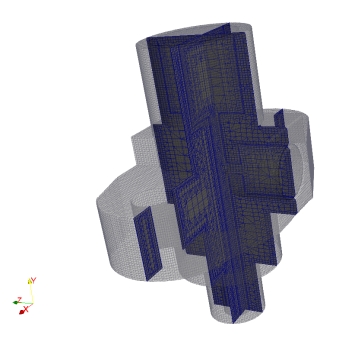Difference between revisions of "SnappyHexMesh – Single region by Bahram Haddadi and colleagues"
Jump to navigation
Jump to search
Jozsef Nagy (talk | contribs) |
Jozsef Nagy (talk | contribs) |
||
| Line 1: | Line 1: | ||
[[category:meshing]] | [[category:meshing]] | ||
* '''contributor''': Philipp Schretter, Yitong Chen | * '''contributor''': Philipp Schretter, Yitong Chen | ||
| − | * '''affiliation''': | + | * '''affiliation''': Institute of Chemical, Environmental and Bioscience Engineering, TU Wien, Austira |
* '''contact''': <mail address='bahram.haddadi.sisakht@tuwien.ac.at' description='author'>click here for email address</mail> | * '''contact''': <mail address='bahram.haddadi.sisakht@tuwien.ac.at' description='author'>click here for email address</mail> | ||
* '''OpenFOAM version''': OpenFOAM 5.0 and v1712 | * '''OpenFOAM version''': OpenFOAM 5.0 and v1712 | ||
| Line 18: | Line 18: | ||
* Understanding the advantages of snappyHexMesh | * Understanding the advantages of snappyHexMesh | ||
* Understanding the three basic steps of snappyHexMesh | * Understanding the three basic steps of snappyHexMesh | ||
| + | |||
| + | Download pdf [http://cfd.at/downloads/FoamTutV4_12-ExampleTwelve.pdf here]. | ||
Picture: Bahram Haddadi, TU Wien | Picture: Bahram Haddadi, TU Wien | ||
Revision as of 08:01, 30 March 2018
- contributor: Philipp Schretter, Yitong Chen
- affiliation: Institute of Chemical, Environmental and Bioscience Engineering, TU Wien, Austira
- contact: click here for email address
- OpenFOAM version: OpenFOAM 5.0 and v1712
- Published under: CC BY-NC-SA license (creative commons licenses)
- Editorial board: Bahram Haddadi, Christian Jordan, Michael Harasek
snappyHexMesh – Single region
Explanation: Mesh a flange geometry and simulate heat transfer in it using scalarTransportFoam.
Objectives:
- The aim of the tutorial is to give a basic introduction to single region meshing with the meshing tool snappyHexMesh
- Understanding the advantages of snappyHexMesh
- Understanding the three basic steps of snappyHexMesh
Download pdf here.
Picture: Bahram Haddadi, TU Wien
